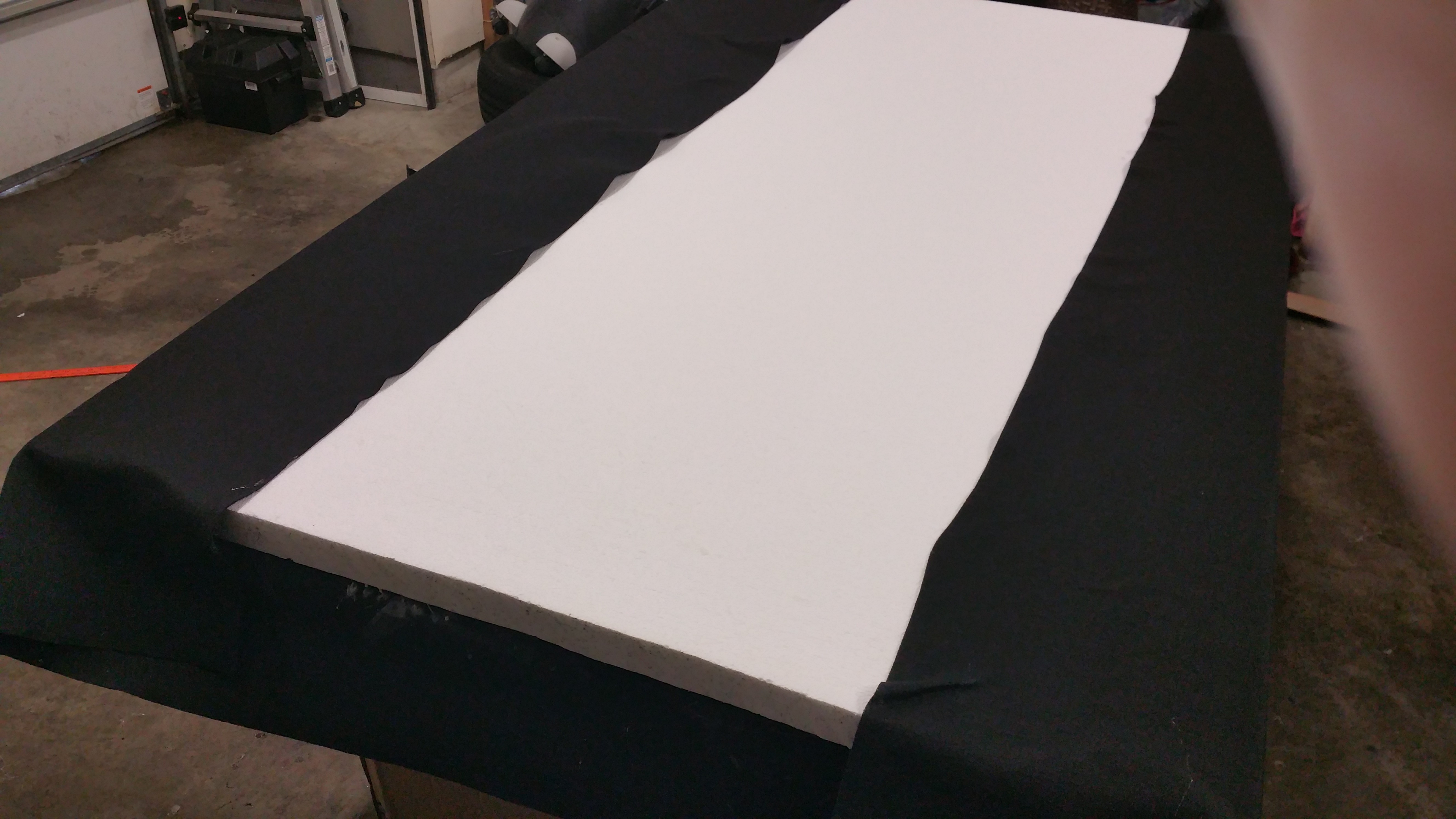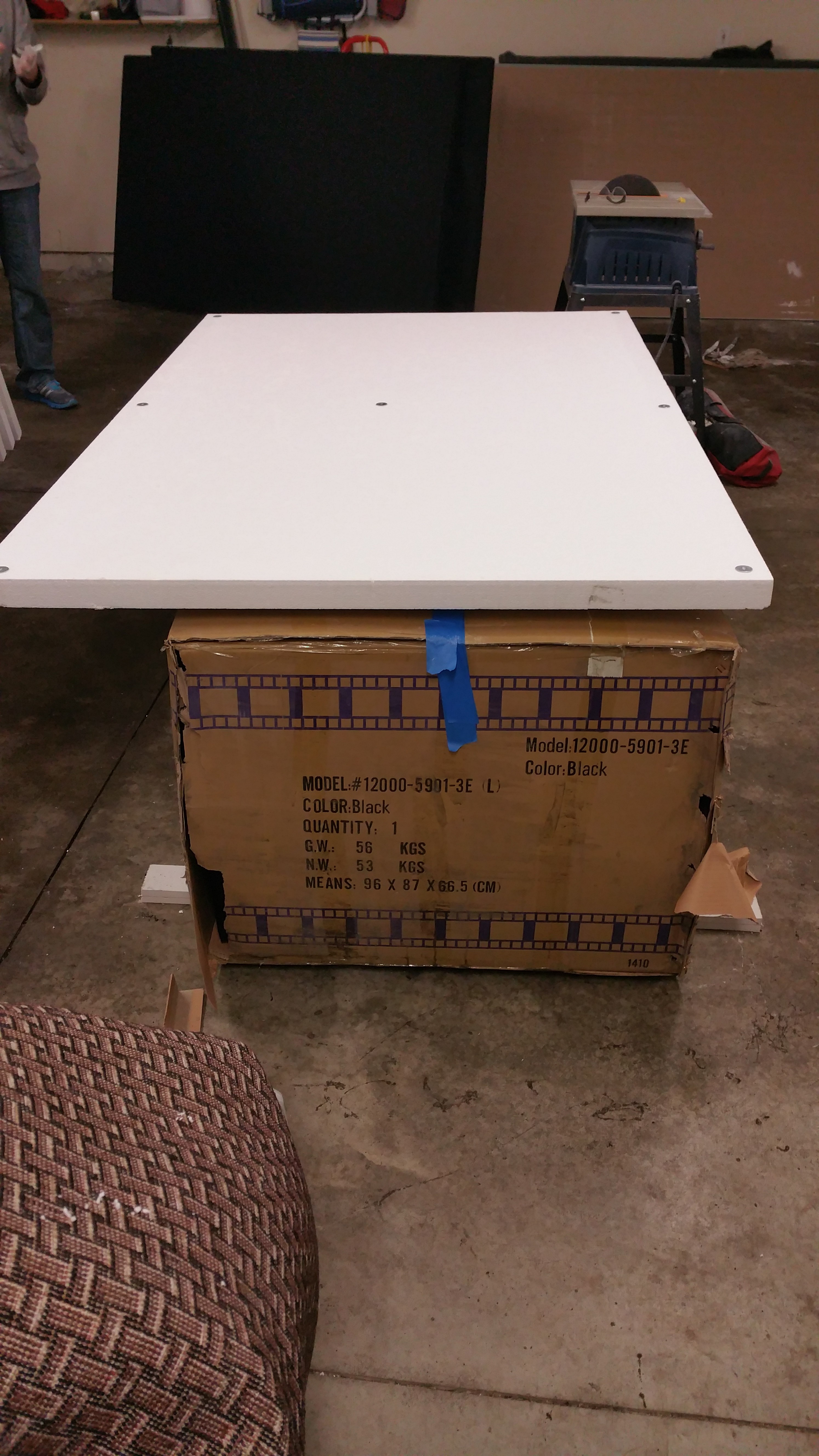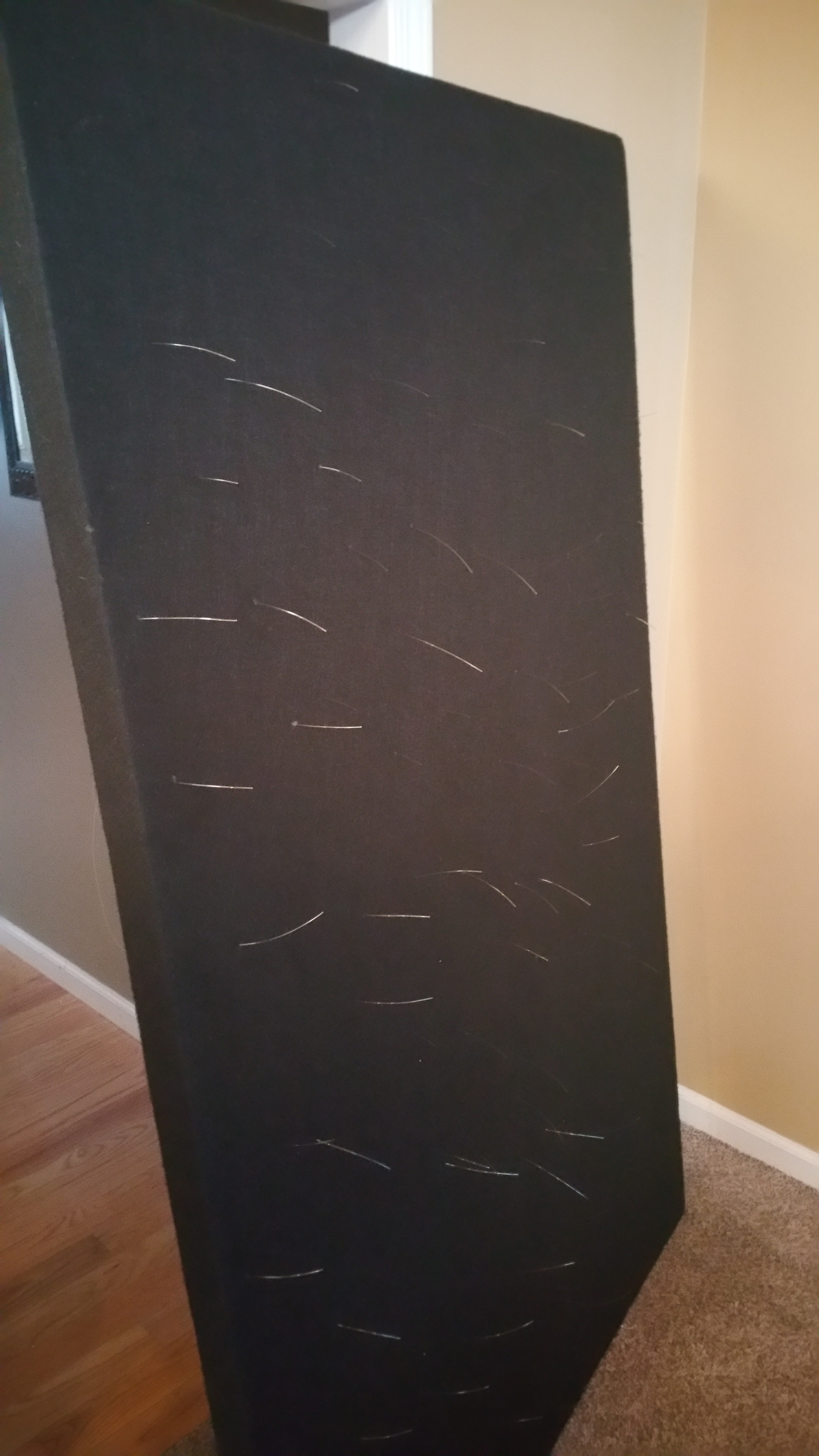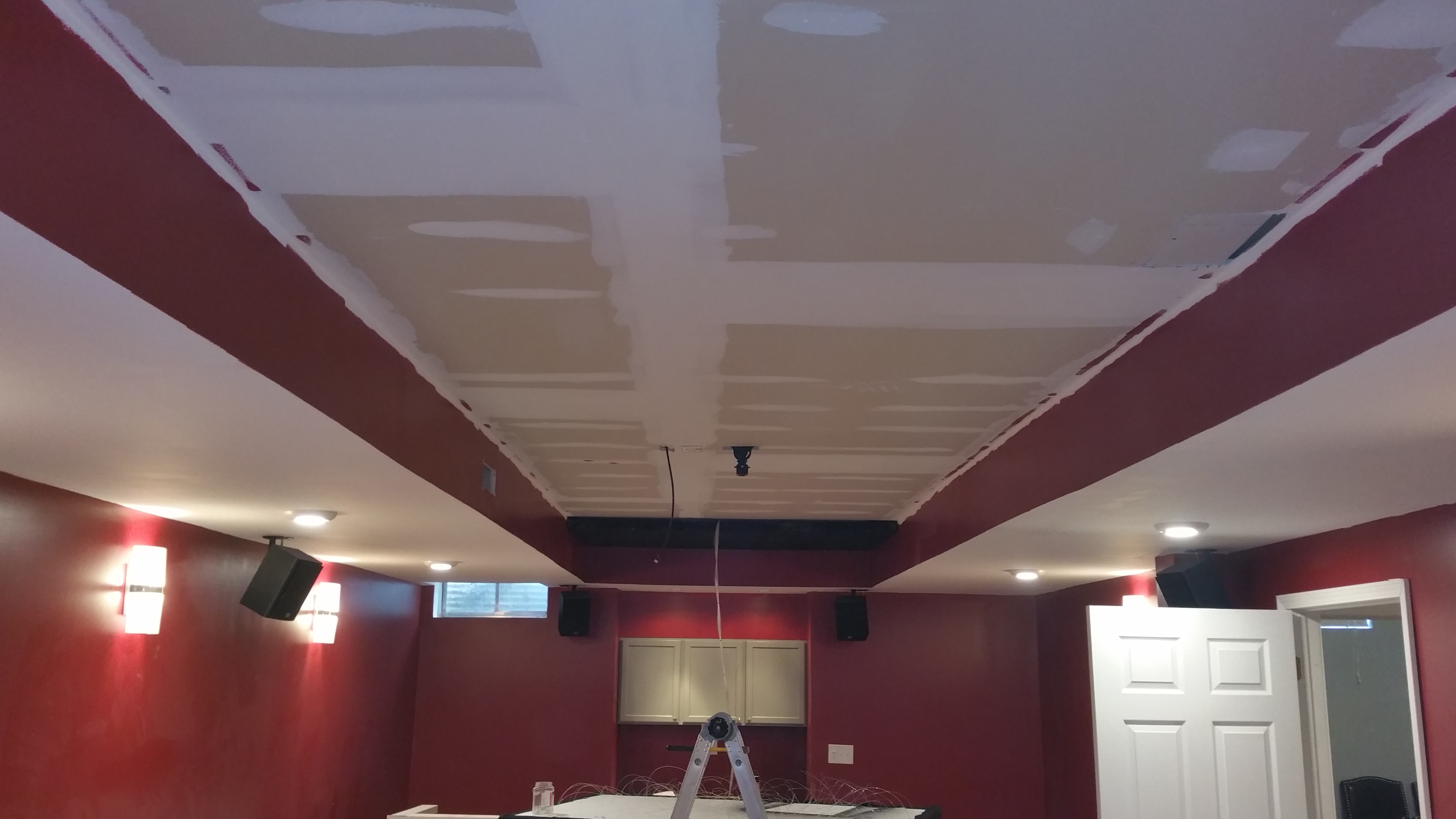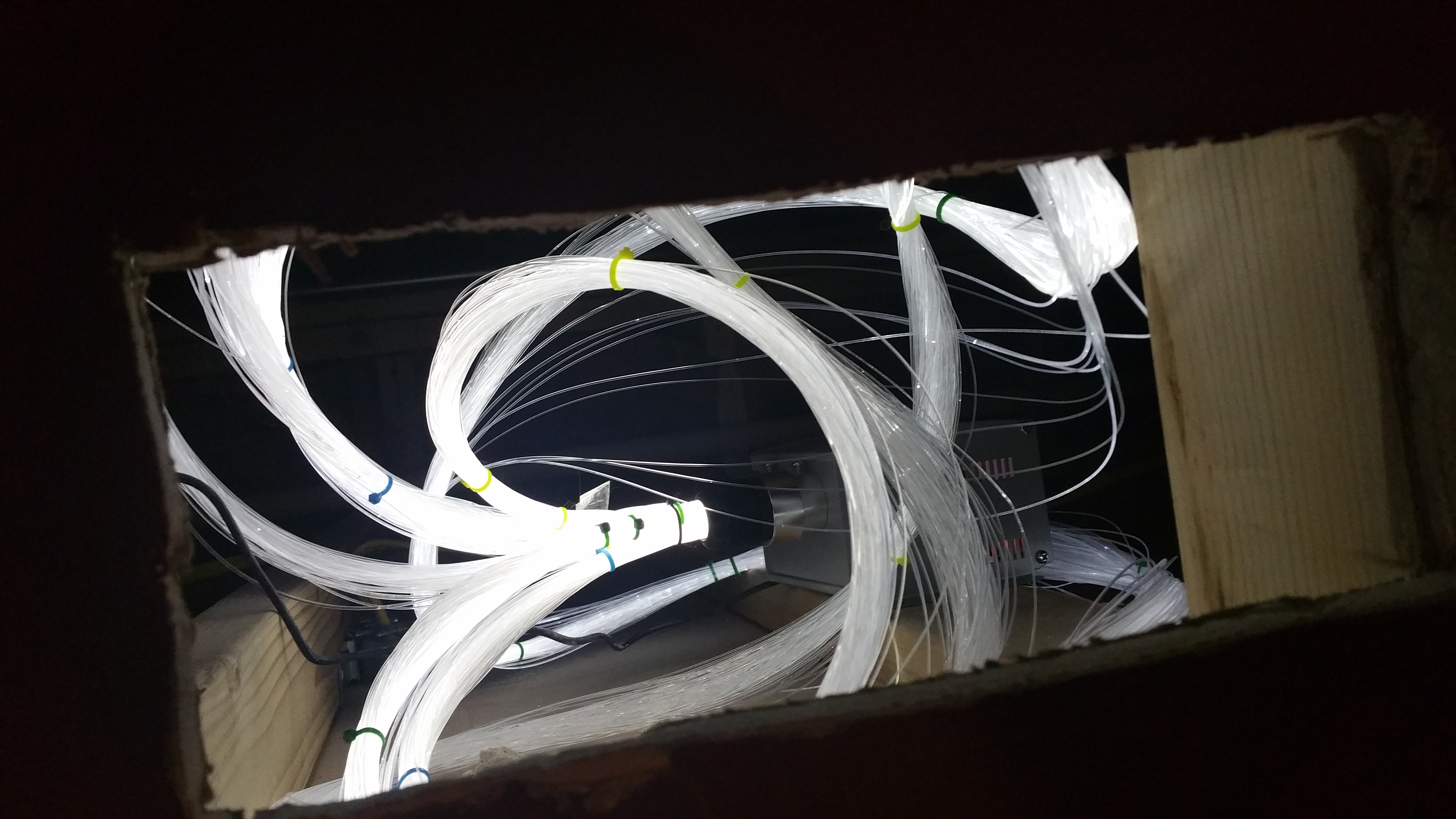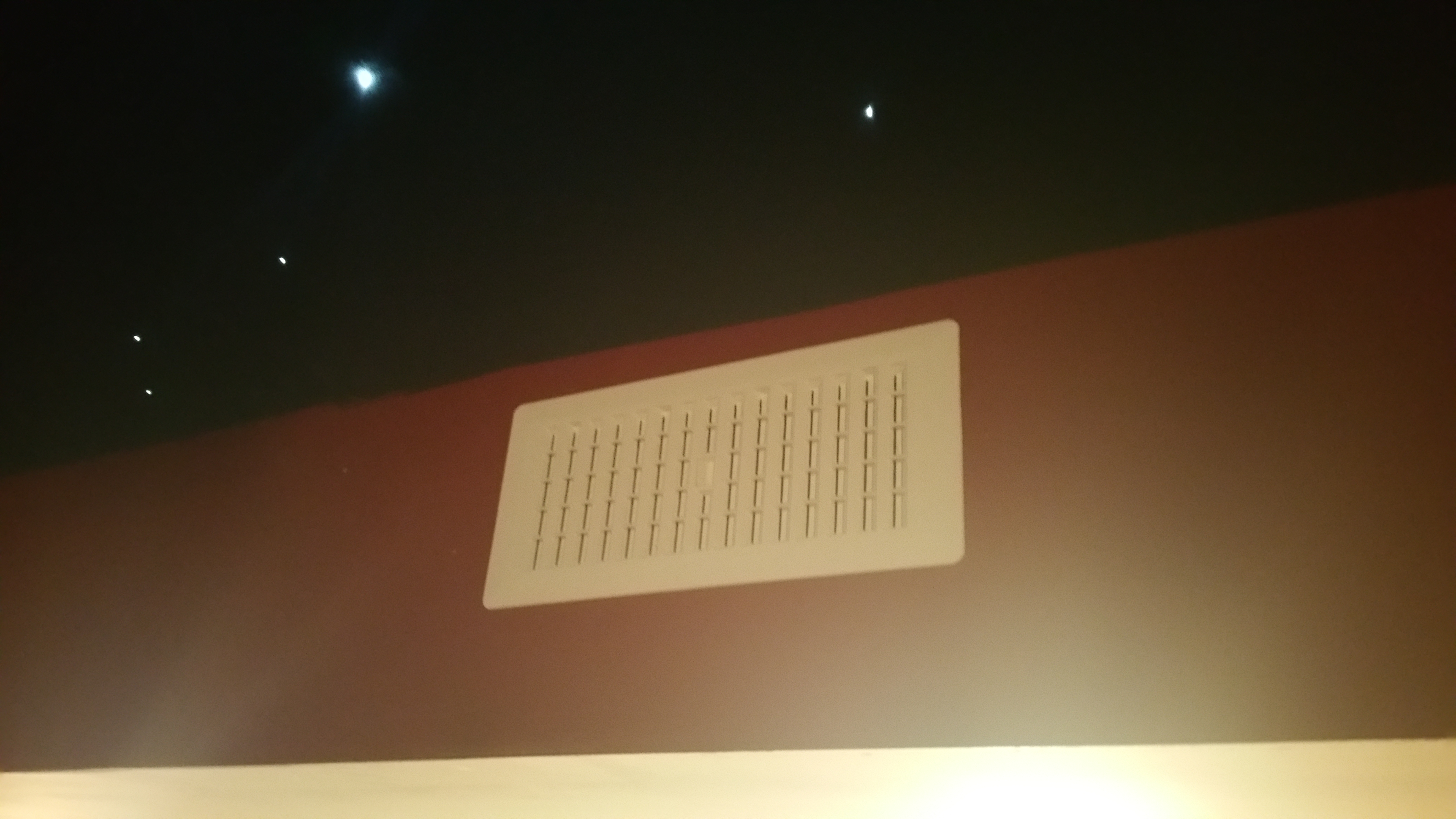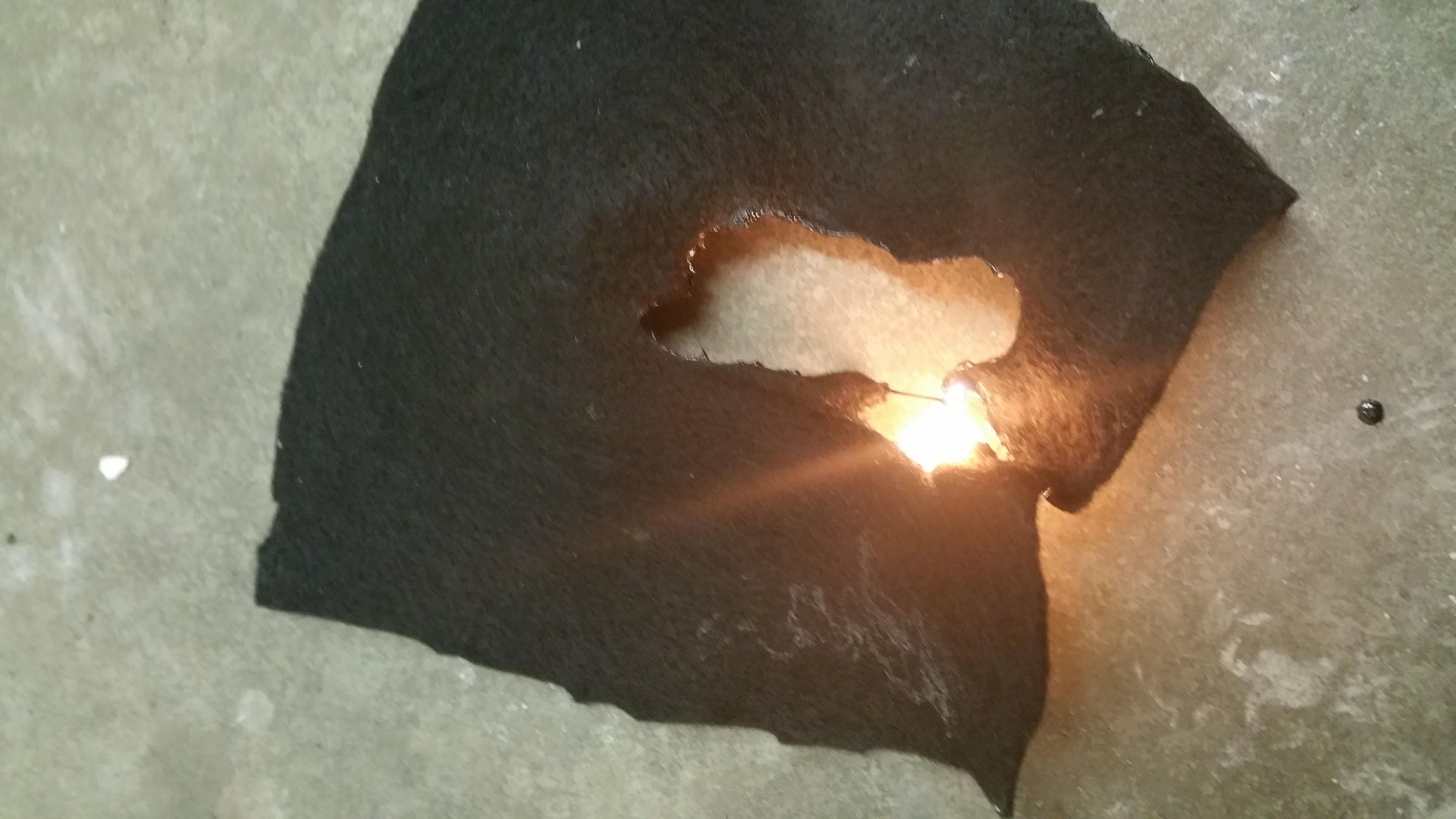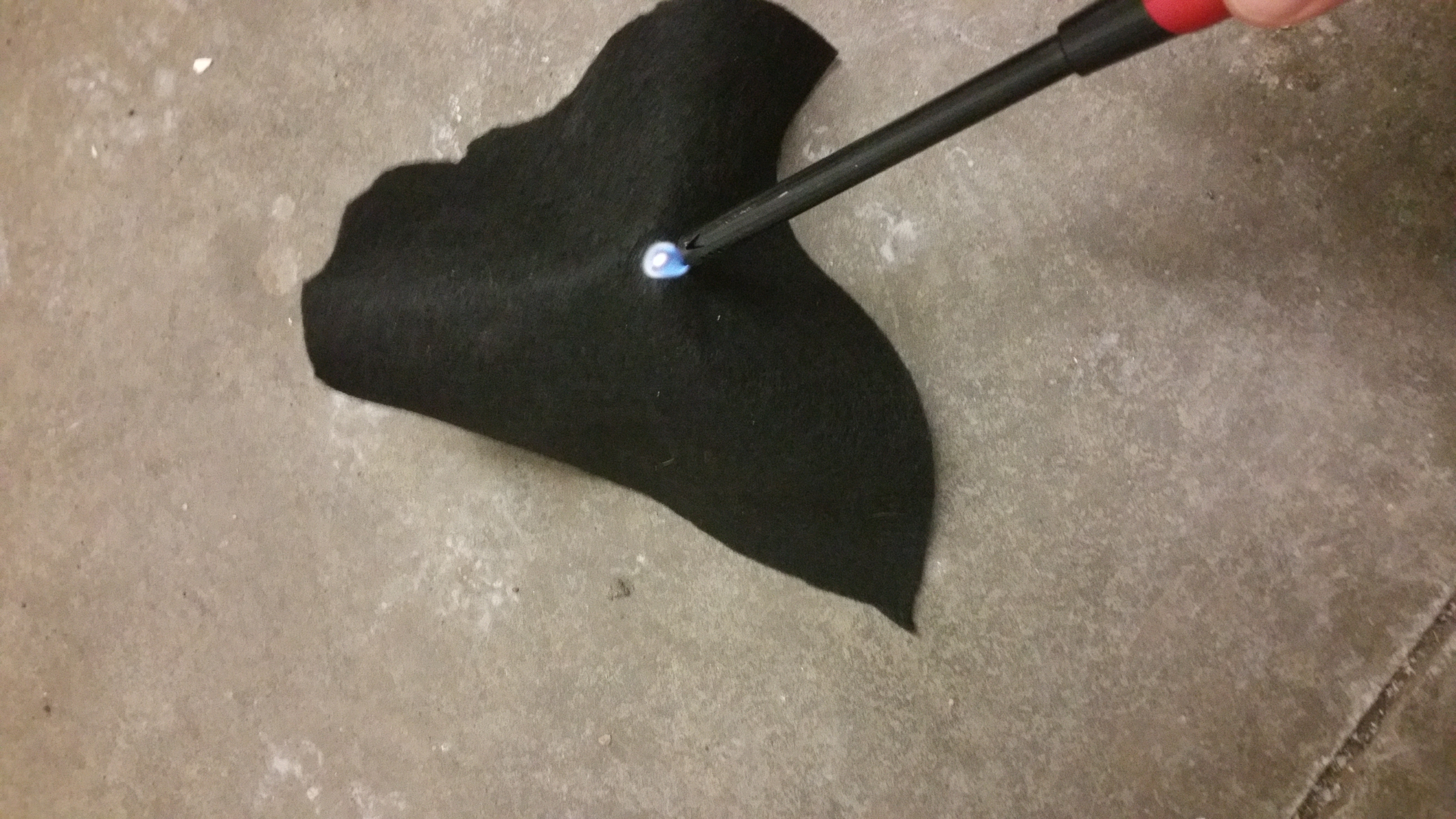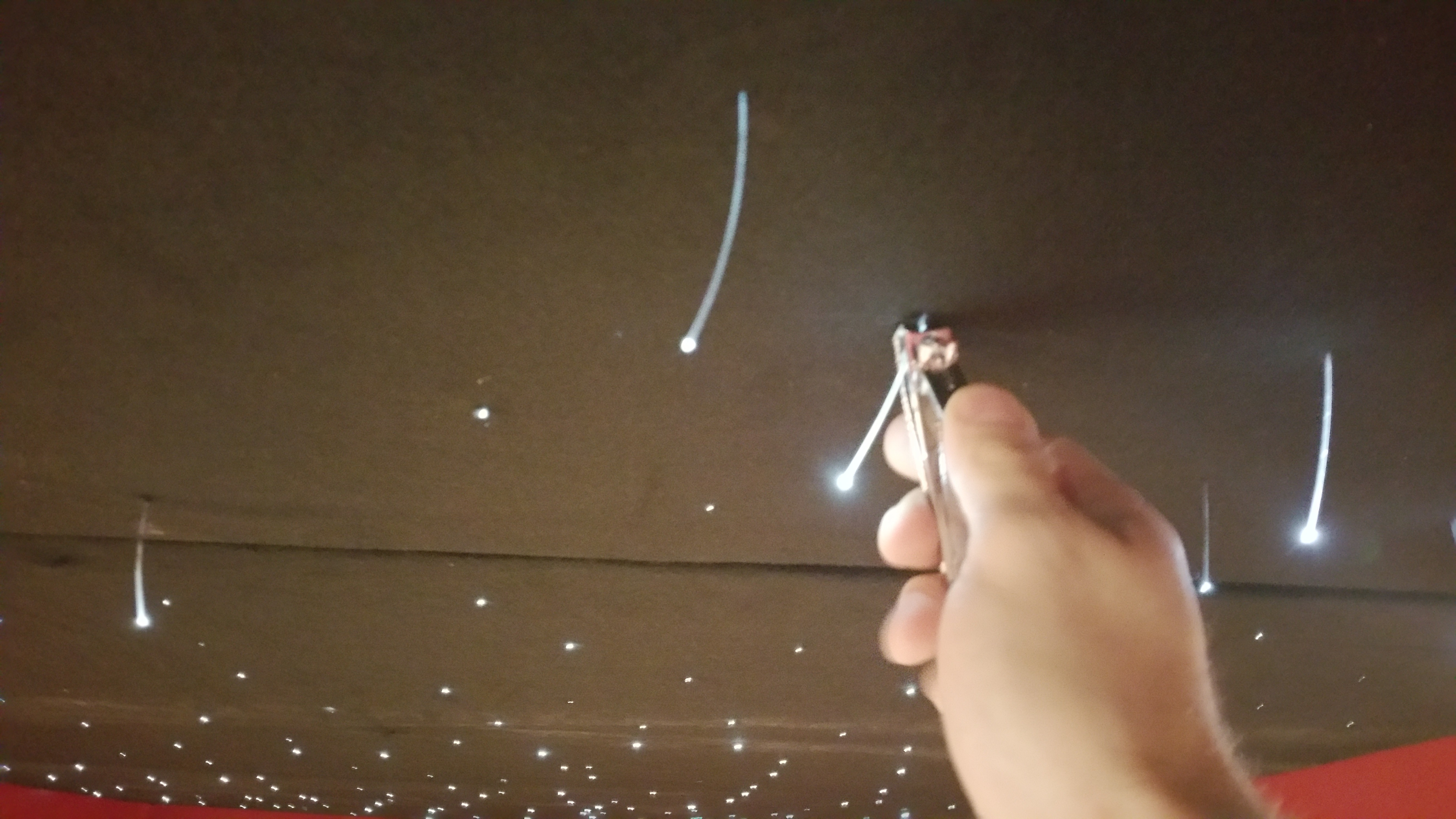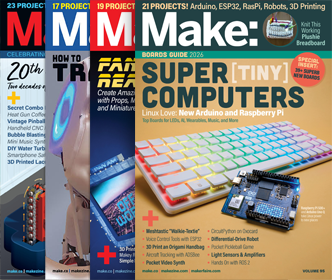For my wife and I, a dream of ours has always been to have a home theater to watch movies with our family. This past winter we’ve finally been able to make it a reality. We had our basement finished and in doing so, I planned a good sized room to be our home theater.
In the planning phases, my wife found a number of pictures online with home theaters featuring beautiful star ceilings. These were in homes where people paid tens of thousands of dollars for their home theater — we were on a budget and I thought there was no way I would have the time or money to pay for something that cool. But, the DIY’er in me wouldn’t let me give up that quickly!
With a little determination and experimentation I was able to build a beautiful star ceiling that really sets this room apart from anything you’ve seen. And it’s really something you have to experience — no picture or video will do it justice. The version of the fiber optic kit I got makes the points of light twinkle like real stars. It creates the perfect ambiance for a home theater, but you could also install these in children’s rooms, game rooms, or wherever you want to create a truly impressive area.
So, did I mention I did this on a budget? I won’t say it’s a cheap project as it’ll depend on the size space you’re looking to do. I did the inside area of a rather large tray ceiling — it’s only 6½‘ wide but it’s about 26′ long — coming to about 169 sq ft. Because of the size, I went with the largest star ceiling kit available, 600 strands.
All together, I estimate the entire project cost between $500-550. If you’re planning on doing a smaller area, you may spend less depending on your materials and the fiber optic kit you chose. Considering the kit manufacturer also resells pre-made 4’x6’ panels at $816 each (I would have needed 6 or more), I think I made out pretty good.

I purchased my kit from Wiedamark. Use their suggestions of which kit to use based on the size area you’re doing. Based on the size of my area, I went with one of their largest kits — the 600 strand 3-size star kit. This kit has 3 different sized “stars” giving a more realistic feel to the starfield. It also comes with a remote, which is nice for dimming the light output. I paid the price you see on the site: $369. Throughout this process I had a number of questions and I can’t say enough nice things about the guys at Wiedamark.
My budget for the project does not take into consideration the amount of time it took. I didn’t exactly keep track but I am estimating the build was somewhere in the 30 to 40 hour range. It was definitely fun, certainly painful at times but totally worth it!
Project Steps
Trim panels to size
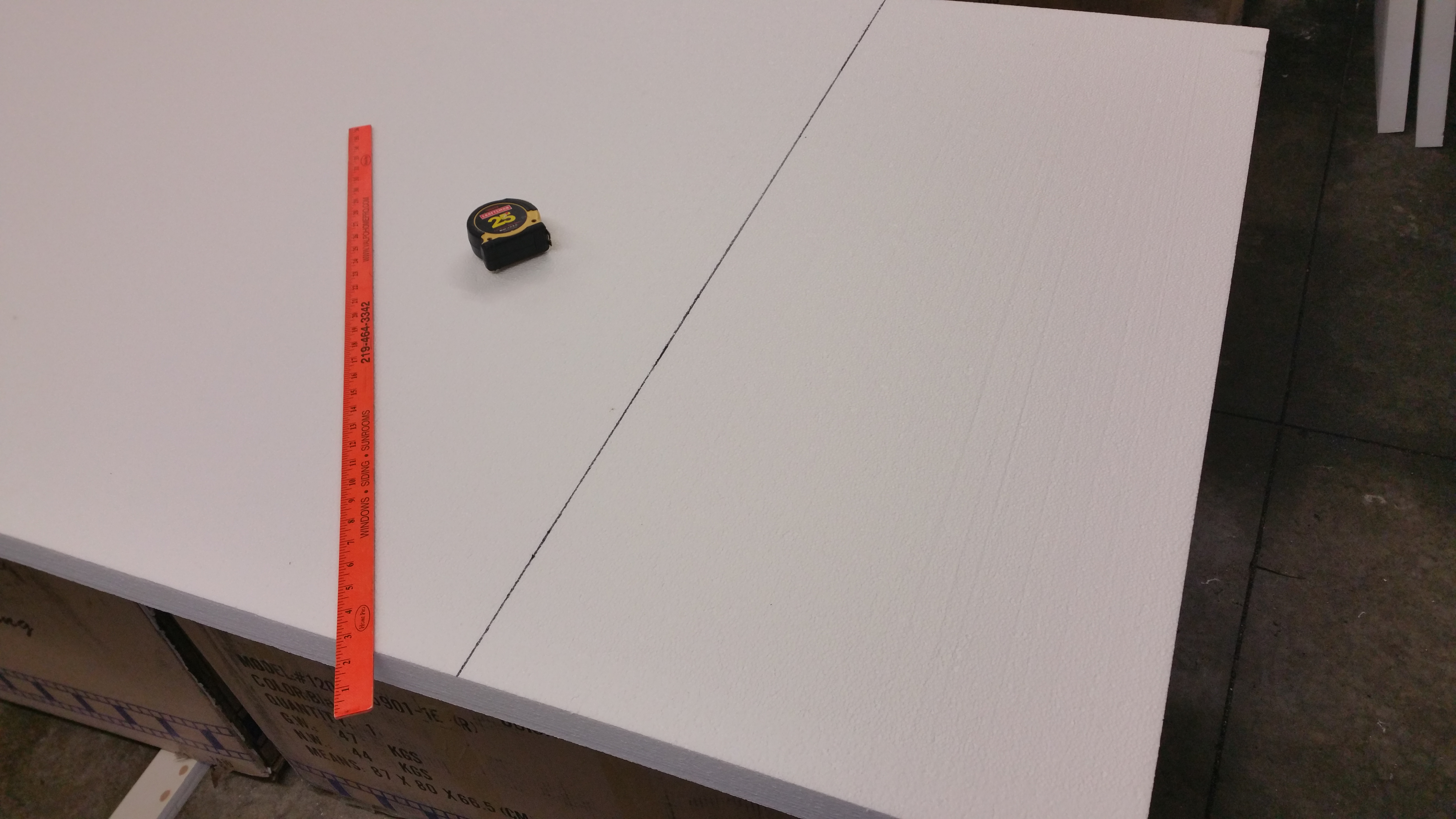
As the saying goes: measure twice, cut once. Really, take your time here because you want to have a nice tight fit between panels. What’s nice about covering these panels with felt is that you can use it to hide small mistakes, but it’s better to have none to begin with.
Measure each part of your ceiling where a panel will go. Don’t just assume your ceiling is perfectly square or even at both ends; most likely, from one end of a room to the other things will be off by ¼ or even ½ of an inch. If you don’t want gaps, it’ll be important to get your measurements right.
Get yourself a black Sharpie to draw your cut lines. I used a table saw with a metal blade to cut the foam. It made a bit of a mess but ultimately made a nice clean cut. You may come up with a different method for cutting the foam, this is what worked for me.
My tray ceiling width was 6½’ so I first trimmed about 1½’ off each board. I mounted the panels sideways (so 4′ long). My overall ceiling length was 26′ which doesn’t divide evenly into 4. So, rather than making another 2′ panel, I took one my panels and taped a 2′ wide piece to the end. Standard duct tape didn’t end up holding well enough. It tended to just want to peel off instead of sticking good to the foam. Instead, I picked up some Gorilla Tape and that did the trick.
Wrap the panels with felt
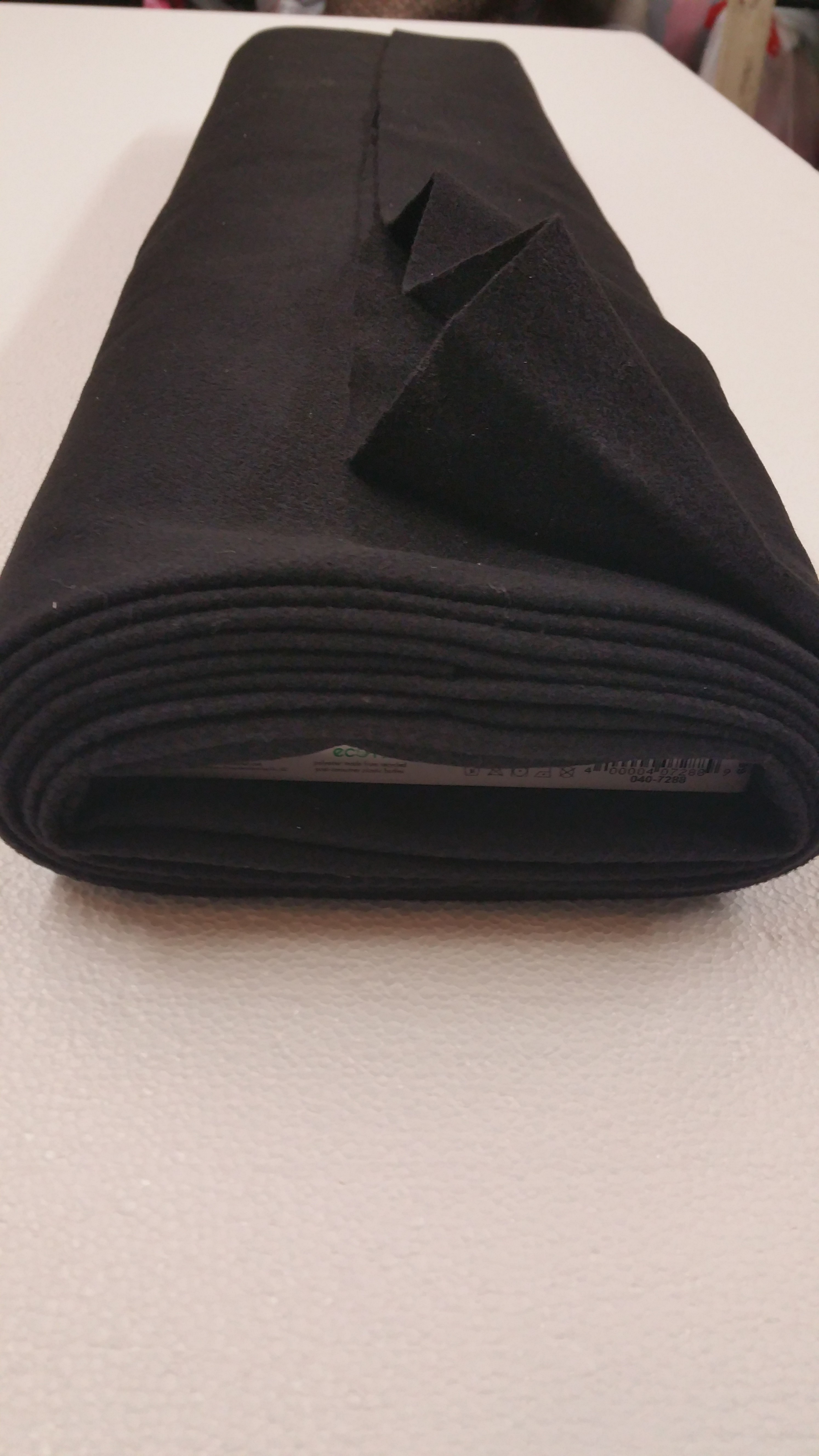
Make sure you have a nice big work area and a helper — you’ll definitely need a second person to help with this step to make sure you get the felt to lay nice and flat on the foam board. You may also want to wear a pair of disposable latex gloves, as this adhesive is very sticky and you don’t want black felt fuzz permanently attached to your hands!
First prepare a length of felt that will cover the entire board (including wrapping around the sides and then partially around the back). You want to have about 2″ extra that gets wrapped around to the back. Don’t use more than that or it’ll cause more problems when you go to mount in your strands later. In the picture above you’ll see I had an overage of closer to 8″-10″ — this was too much and I had to go back later and trim this off. That was not fun, so take my advice and cut it accurately before sticking it on.
Wrap the panels with felt (cont'd)
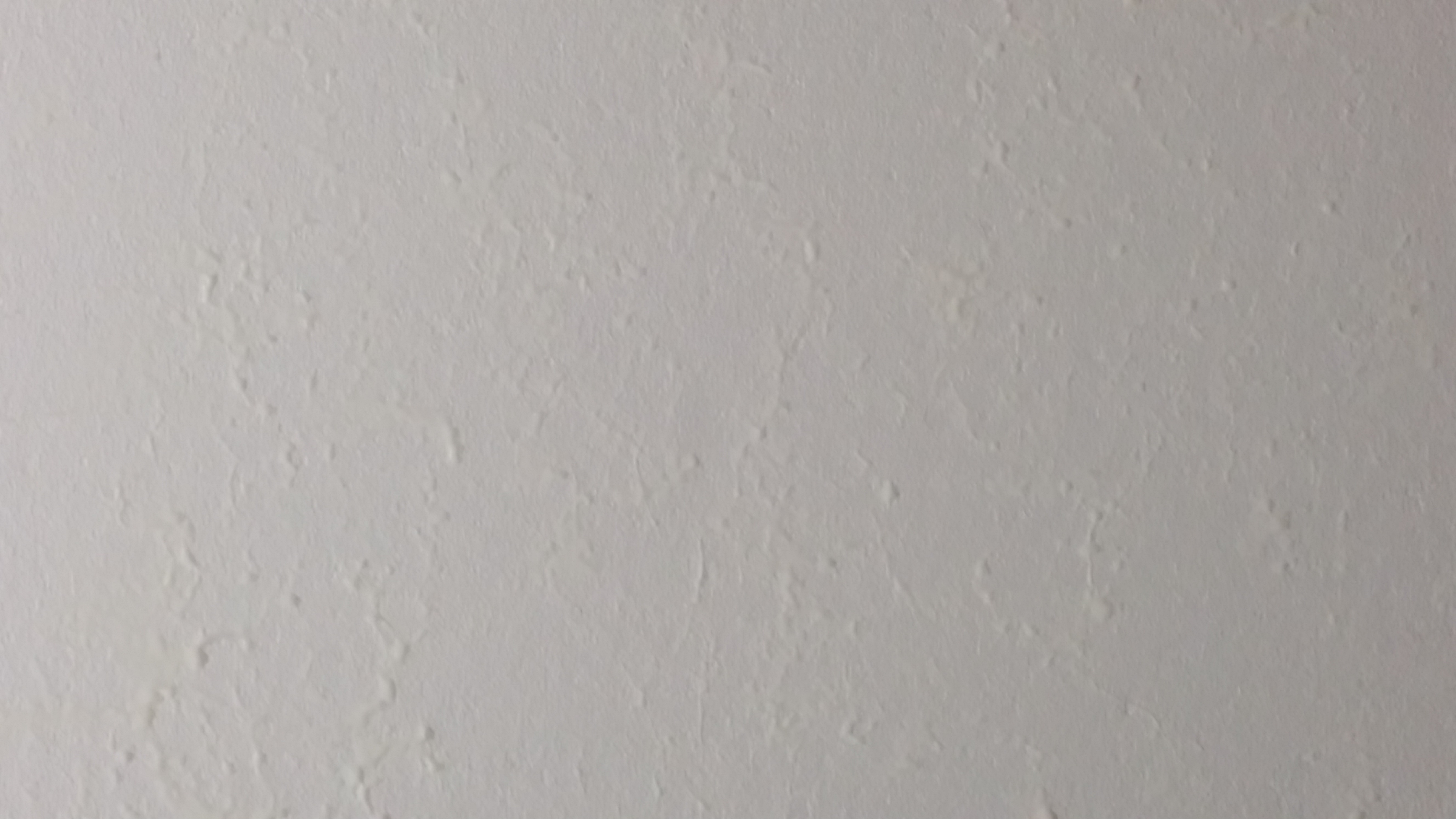
Prop your board sideways (up and down). Holding your adhesive can vertically, spray the entire surface evenly. Don’t be afraid to use a good amount; you don’t want any bare spots or your felt will sag in those areas.
Lay the board flat with the glue side facing up. With the glue still wet, take 4 washers and put one in each corner. Then, put 2 in the middle. This number of washers worked well for me; if you’re doing a full 4×8 board you may want to use more (like another 2 in the middle of the board). The washers will get covered with the felt.
With the help of a friend at each end, take a pre-cut length of felt and hold it out — stretched taut — above the board. Working together in one motion, bring the felt down evenly onto the foam.
Working quickly, both people should reach to the center and begin stretching the felt out to the outside edges. Work from the center out and back towards yourself until there are no air pockets, creases, or bumps in the fabric.
Wrap the panels with felt (cont'd)
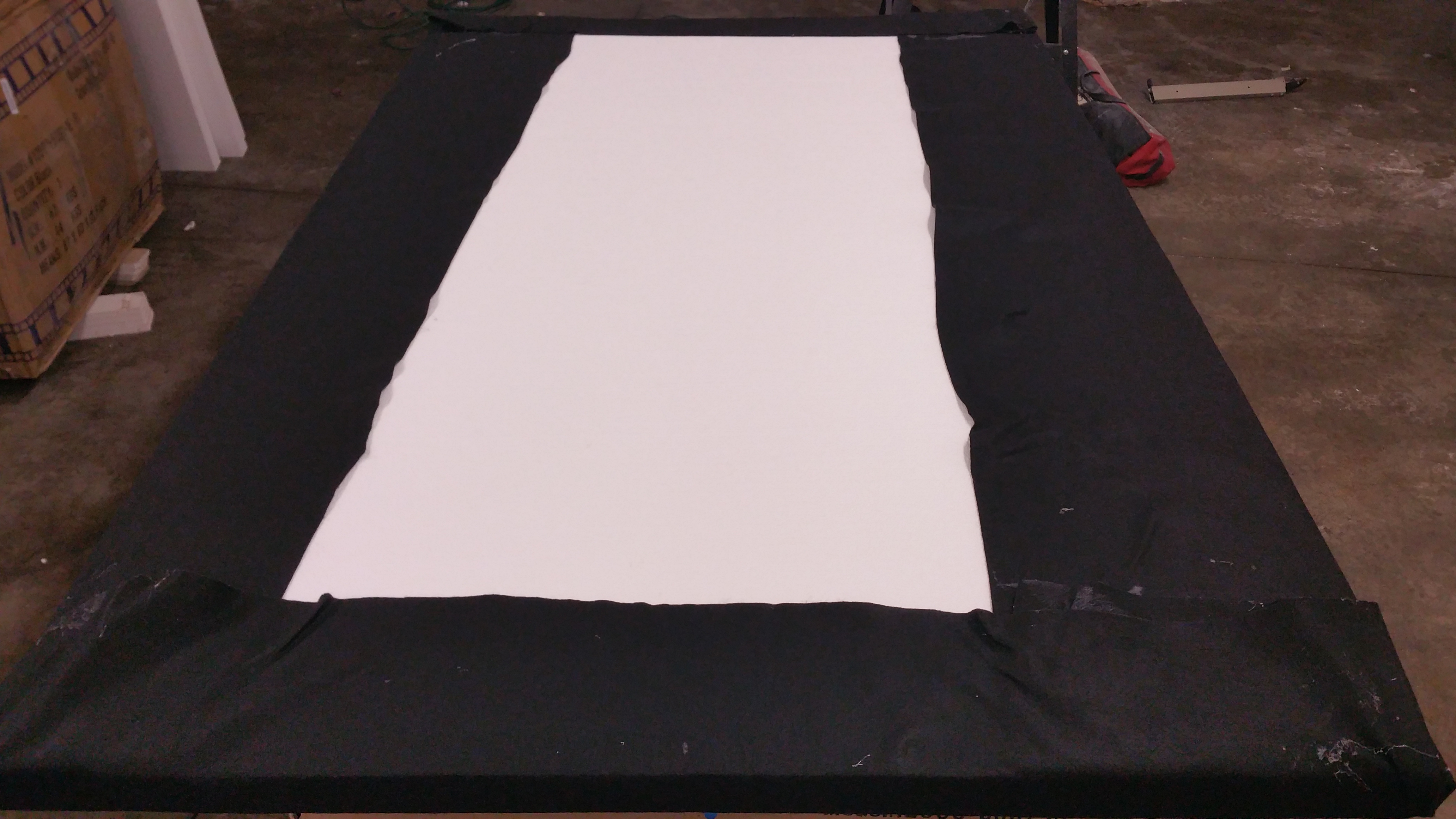
Flip the entire board over on your work surface so that the board is upside down. Spray the sides of the board and the back around the edges. A little bit of overspray on the back is fine — this adhesive dries pretty quickly (this is the part where you want to be wearing gloves). Wrap the felt around the sides and pull tight so the felt is held nicely in place on the back.
You should now have one wrapped panel with a perfectly smooth black finish. If the areas where you placed the washers look like they’re protruding a bit, feel free to push them into the foam so they are level with the rest of the surface.
Repeat this process (steps 2 – 4) for the rest of your panels.
Separate your strands into bundles
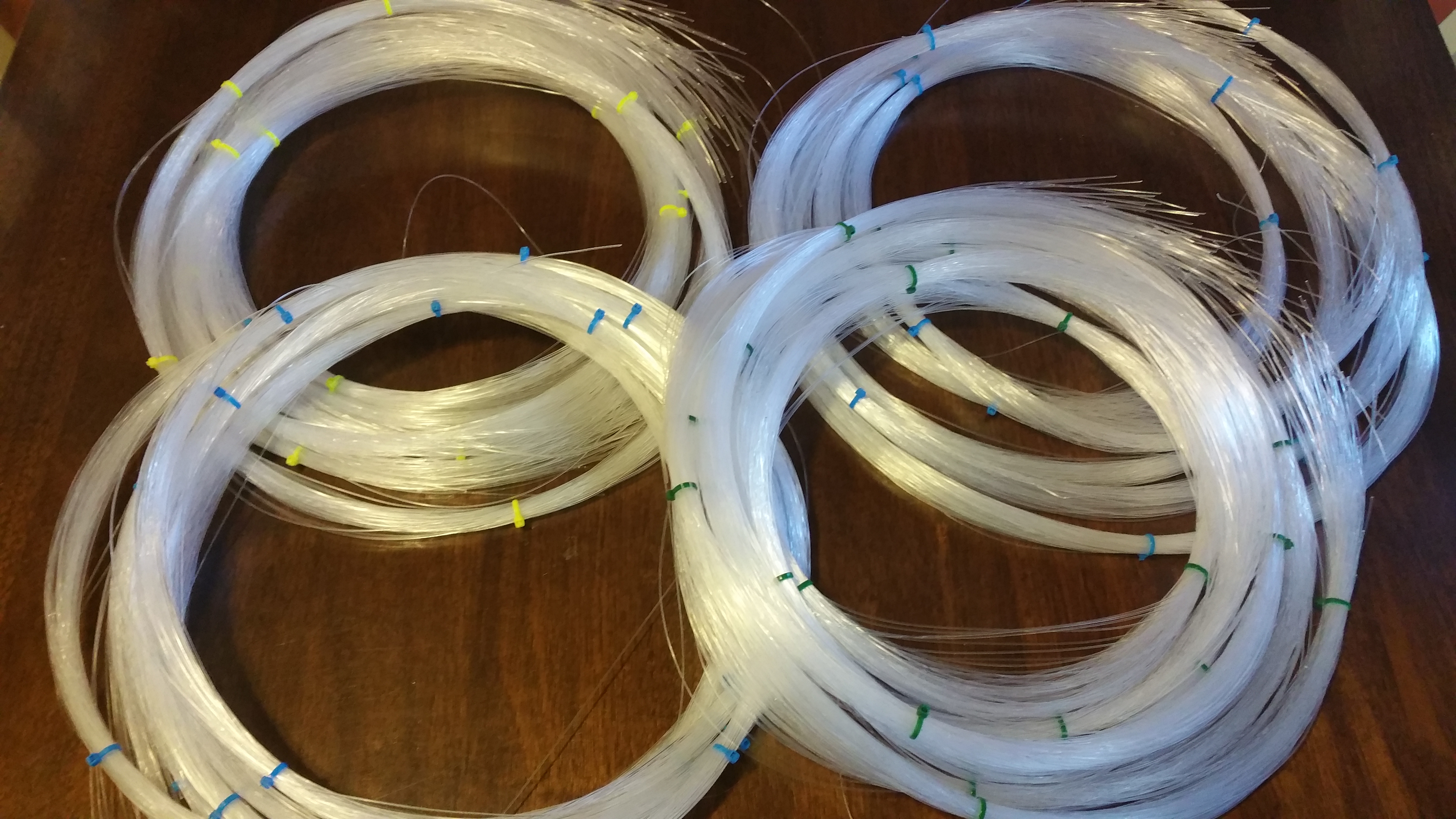
OK, I’m just going to come out and say it — this step SUCKED more than anything else involved here. This process took me probably 4 or 5 hours. I tried a number of different approaches, and each method sucked just as much as the last. However it is necessary so here’s what worked “best” for me.
First figure out roughly how many strands you’ll need per panel. Since one of my panels was larger than the other, it wouldn’t be the same amount per panel if I wanted to have a even disbursement of stars across the ceiling. Since I started with 600 strands, I ended up doing about 95 on 5 panels and 125 on the larger one. I say about because a few strands were broken in the process. It’s going to happen. Try not to let it happen, but don’t worry if you lose a few strands. No one’s going to know because it’s still going to look awesome when you’re done.
Get yourself a large work area — each strand is between 12 and 17 feet long (depending on the kit you go with). Most of the kits come pre-bundled with 300 strands. Wrap the whole bundle with several zip ties to keep that grouping together and stretch them all the way out.
Begin one or two at a time, pull the strands out and separate them into a new grouping. Use clamps or books (or whatever you have at your disposal) to keep them in a nice straight line throughout this process.
It works best to pull from one end and just get one at a time all the way out, then put it in the other bundle line. Take your time and have patience. Put on some music and try not to curse too much. You’ll get there!
As soon as you can, start putting zip ties around your new bundle. I even opted to put zip ties on during the process (about every 20 strands or so) and just cut them off later. Believe me, this could save a lot of time if something happens and you don’t want to have to start a bundle all over.
When you’re done, make sure there are zip ties about every 8″-12″ around the entire bundle.
Get a piece of tape, wrap it around the end of your bundle, and write the number of strands you managed not to break on the tape. I think out of the 600 strands, I probably lost about 8 or so.
Now get a drink and start on the next set.
You may be saying, “geez man, it can’t be that hard.” Your first instinct may be to count out 95 strands or how many ever you need in your hand and just begin pulling & yanking. Well, when you have hundreds of little strands, all nearly 17′ long and each one wanting to go their own way, you’ll quickly see yanking isn’t going to get you anywhere. They immediately bind up and you can’t separate them. If you devise a better method than the one I described, I’d love to hear about it!
Install the fiber optics

Back to the fun stuff! Now it’s time to insert each “star” into foam board panel one by one. Ok, maybe not so fun, but anything beats separating strands. :)
First, you have to start with a starfield design. I thought about modeling my design after a shot of the Milky Way. I quickly decided that’d be too difficult. Then I thought maybe I’d set a projector to display a computer-generated random disbursement of stars on the area and put dots on the surface where they belonged. I even wrote an app to randomly generate the starfield; it was pretty fun way to teach myself about the HTML 5 Canvas object.
Then I got the board in front of me and realized I was totally overthinking this. Why not just place the dots myself at random? So, that’s just what I did.
Lay your panel down flat on top of a table and take a moment to clean the panel. No doubt by now your panel is full of lint, foam bits, and dust. Take a lint roller and go over the entire surface; it worked really well on mine to clean the panel of debris.
Install the fiber optics (cont'd)
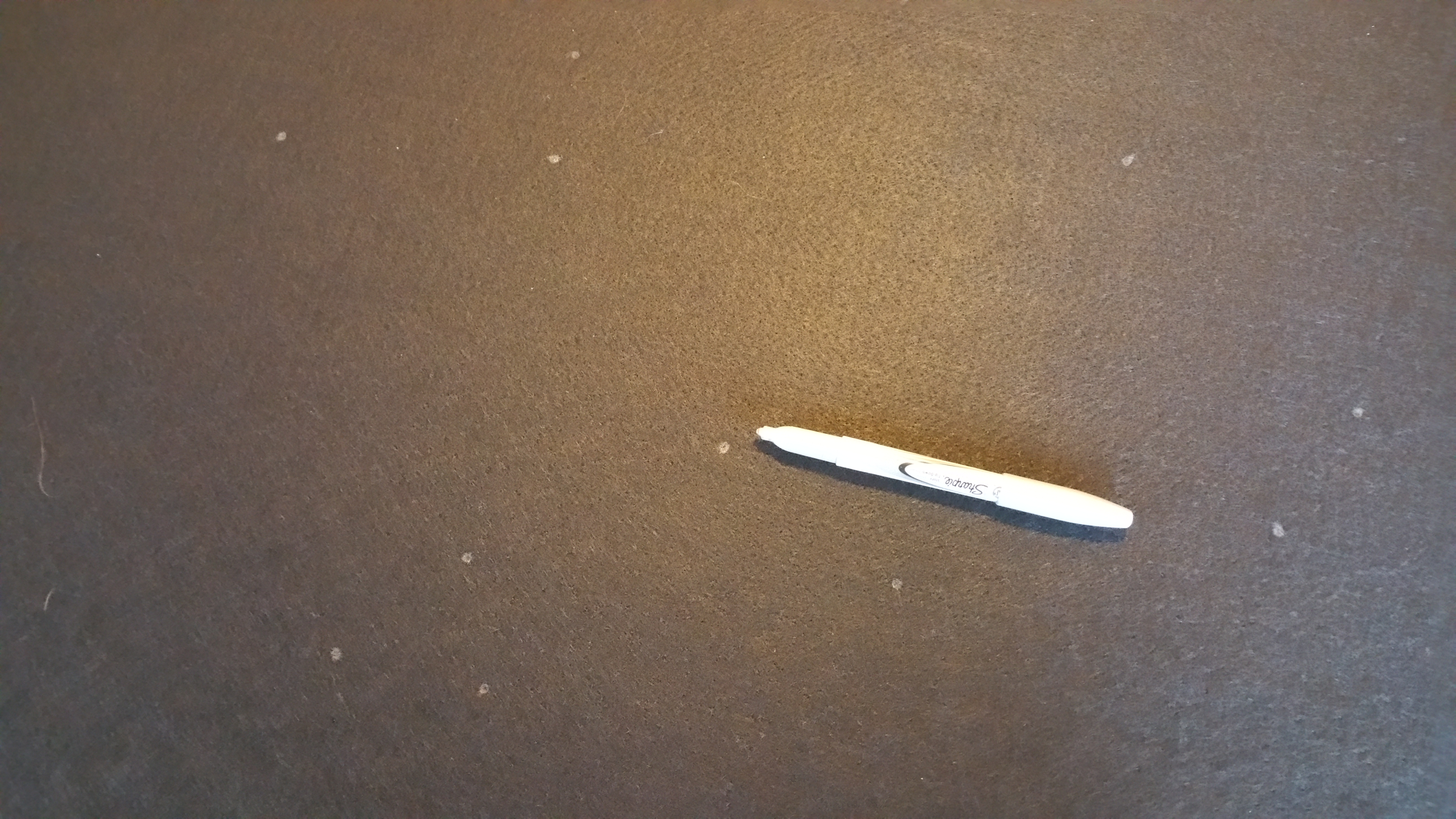
Grab the bundle of strands that you’re going to use for this panel. Check the number of strands that you wrote on the piece of tape for this bundle.
Take your marker and count off the same number of dots over the surface of your panel. The good part about this method is you’ll get a truly random pattern. Don’t worry about spacing them perfectly even or anything. In fact, go ahead and put a few right next together. When you look up at the night sky you’ll often see groupings of stars like this — so go ahead and make it look authentic.
Now, stand your bundle up vertically. For this process, it works easier if have access to both the front and back of the panel at the same time. Tape one of the ends of your bundle to the center back of the panel. This will hold the strands in place while you’re working, giving you easy access to the strands. Leave about 3′-4′ outside of the tape.
It may save you time if you have a partner help you with the next few steps, but I did it by myself. Take a small screwdriver (or a nail) and puncture a hole from the front, straight through to the back. Leave the nail in as a temporary marker to easily see from the back side.
Grab a single strand, now remove the nail and feed the strand through from the back of the panel out of the front. Leave at least about 4″ of slack sticking out.
Repeat this process for all of your holes. It works best if you start a few at each corner first; this will make sure your bundle is positioned in the right place and you won’t have to spend a lot of time unraveling stuff later to make it reach.
Now go through top to bottom and place a good dab of glue where each strand goes into the board. Push and pull the strand a few times to make sure to glue gets in there. Within a couple hours, the glue will dry and you’ll have a complete panel.
Install the fiber optics (cont'd)

You may want to throw a few pieces of tape across the back to hold all the strands down flush to the back of your panel. Regardless, it’s going to look like a total rat’s nest back there.
Take a moment to appreciate how far you’ve come! It’s pretty fun to shine the illuminator into the other end of your bundle and actually see your panel light up for the first time!
Now repeat this process (steps 6-8) for each of your panels.
Hang the panels

With your panels’ assembly complete, it’s time to install them. Hopefully you’ve been paying close attention to the lengths of your strand bundles and have everything laid out in a way that will allow your bundles to reach to where your illuminator box will be.
Locate your washers under the felt and use an X-Acto knife or box cutter to cut a slit on the top of each washer in your panel. Leave enough room on each side of the slit to allow you to insert a screw and screw it into place. DO NOT attempt to screw directly into the felt without first cutting the slit. Your felt will twist around the screw and rip off from the foam board (don’t worry about about the hole, it can be easily concealed later).
Push a screw through the center of each washer until it pokes out a little bit through the back of the board.
Lift the board into place; make sure it aligns flat against the wall and/or other panels around it. You want no gap between the panels, creating as seamless of a look as possible. A partner would be helpful with this.
Hang the panels (cont'd)
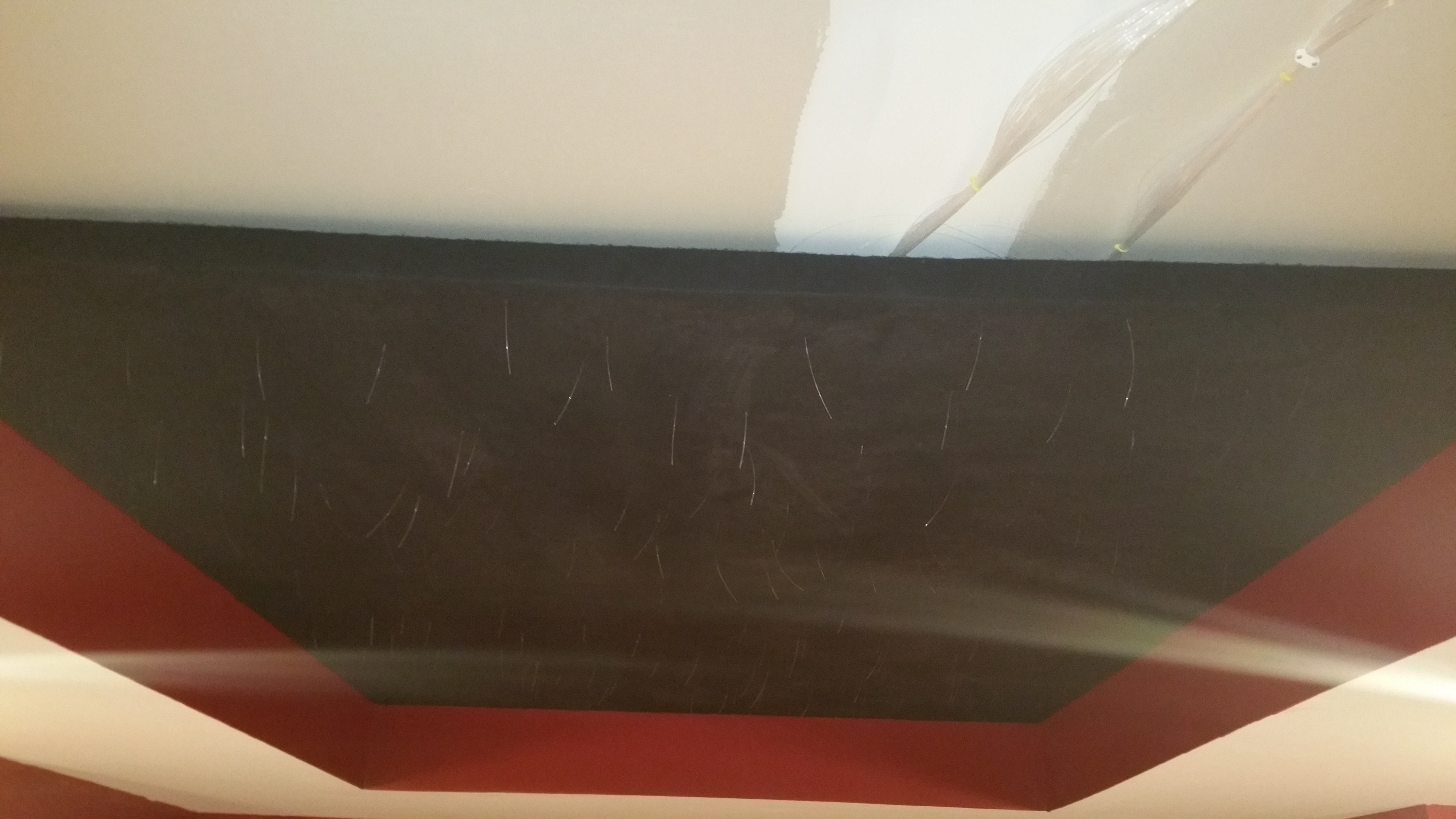
Tighten each screw directly into the drywall ceiling. Considering how lightweight these panels are, you don’t have to worry about hitting studs. However, don’t fasten these panels all the way up against the ceiling. You’ll want to leave about a ½” gap between the ceiling and the panel. This will allow room for your strand bundles to run behind the panel.
One nice thing about using screws like this is it allows you to adjust the height of each panel at different points. Adjust the board up or down to make everything level and even with surrounding panels.
As you go, nail your strand bundle up in a straight line towards you illuminator using cable staples.
Repeat process (steps 9 and 10) until all panels are hung.
Connect strand ends

The placement of your illuminator is going to depend on your room size and layout. You’ll want to place it somewhere where it’s concealed. Since I have a tray ceiling, I knew there would be plenty of room in the soffit of the tray. So, I placed it directly in the middle of my room and concealed it with a ‘faux’ vent cover. This looks natural in the room, but I do plan on painting mine red to blend better into the wall. Just make sure you plan ahead on your illuminator placement to ensure all your strand bundles will reach it – you’ll want to have at least a foot of slack.
Gather up your bundles and disassemble the compression couplers that came with your kit. If you have a total of 600 strands then you’ll have to divide them into half — each coupler is designed to hold about 300 strands.
Feed the strands through each piece of your coupler assembly in order, tightening each piece about halfway as you go. This can be a bit of a time consuming process, just keep working at it until they’re all in there. Leave about 1-2 inches of extra strand sticking out the end.
Connect strand ends (cont'd)

Using your toenail clippers, begin cutting the ends flush with one another. You can do this about an ¼” past the end of the metal tube — just make sure they’re as even as you can possibly make them — then pull the whole bundle back until it’s perfectly flush with the end of the tube.
Tighten down all the parts of your coupler to ensure nothing comes loose. Attach the couplers to your illuminator and conceal it.
Treat the panels with fire retardant
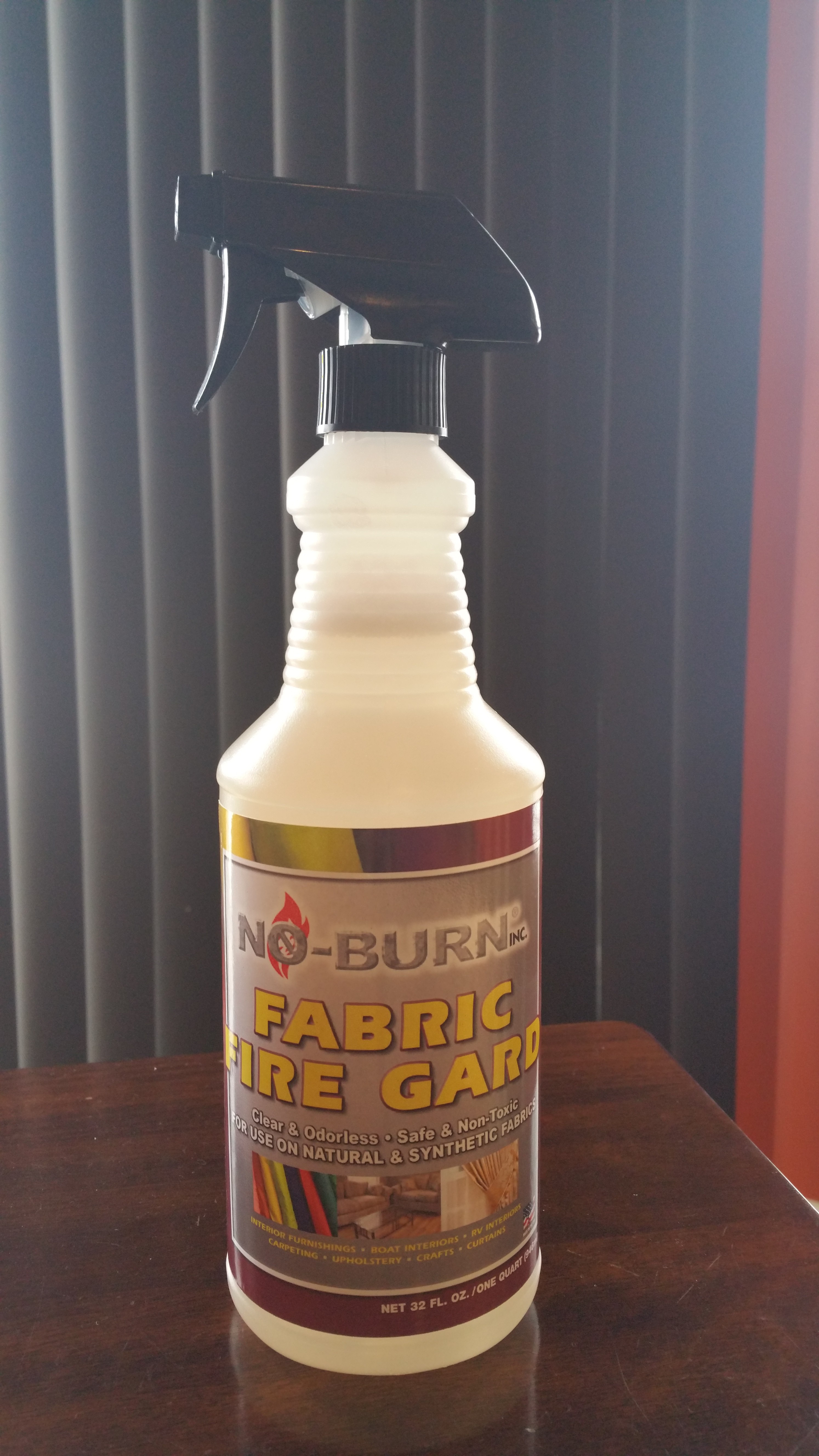
Felt is flammable. Please take this precautionary step to ensure it doesn’t become fuel for a fire in case of the unthinkable. This is relatively inexpensive and takes barely any time. While fiber optics themselves don’t conduct any heat, I do have a projector mounted just a few inches below the panels and that does get hot. That’s why I started thinking that just as a precaution, all of the panels should be treated.
I tested burning both treated and untreated felt. As you see in the picture above, it will catch fire and spread. It kind of sparks as it burns — kinda of pretty — but you don’t want this to happen in your home. In the 3rd picture I am trying to light a treated piece of felt. However, it will not catch fire. It does melt because of the heat of the fire, but it will not become additional fuel for a fire.
With your panels in place, evenly spray the felt and let it dry. That’s all there is to it! Just make sure you don’t get it on anything else or in your eyes.
I recommend doing this step after you have the panels in place. I didn’t do it this way, in my case I treated the panels before hanging them. What I didn’t realize is that the fire retardant contains some kind of alkaline salts, and after handling the black material, you could kind of see whitish powdery handprints all over the felt. So, I would recommend handling the panels as little as possible after treating them to avoid having to try to clean them later.
Trim the strands
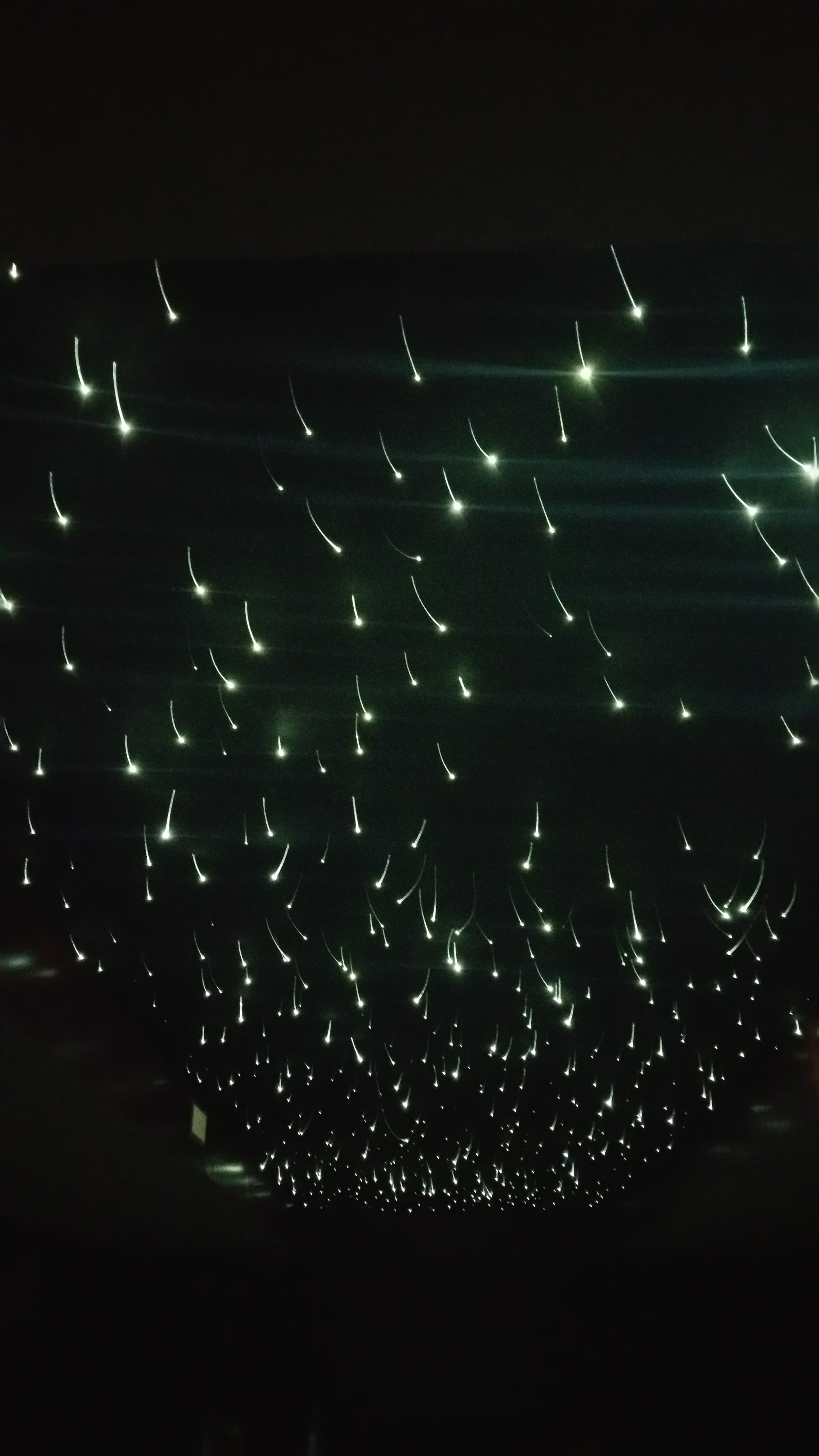
While it looks pretty cool to have these hanging lighted strands, it gives more of the impression of stars once they’re trimmed. My daughter said they look like “shooting stars.”
Take your toenail clippers and go along trimming each one. You want to leave it sticking out about 1/16 to ⅛ of an inch from the surface of your felt. This way you ensure the tip won’t get covered by felt fuzz (which would dim the light). This process can be a bit tiring on the arms, but didn’t take me more than an hour to do the whole ceiling. Be prepared for cleanup though!
Don’t worry about cutting them perfectly straight either; in fact, a recommendation from the manufacturer says to go ahead and cut them all at slightly different angles. This gives more of a “3D” effect when you’re done.
Enjoy your place under the stars!

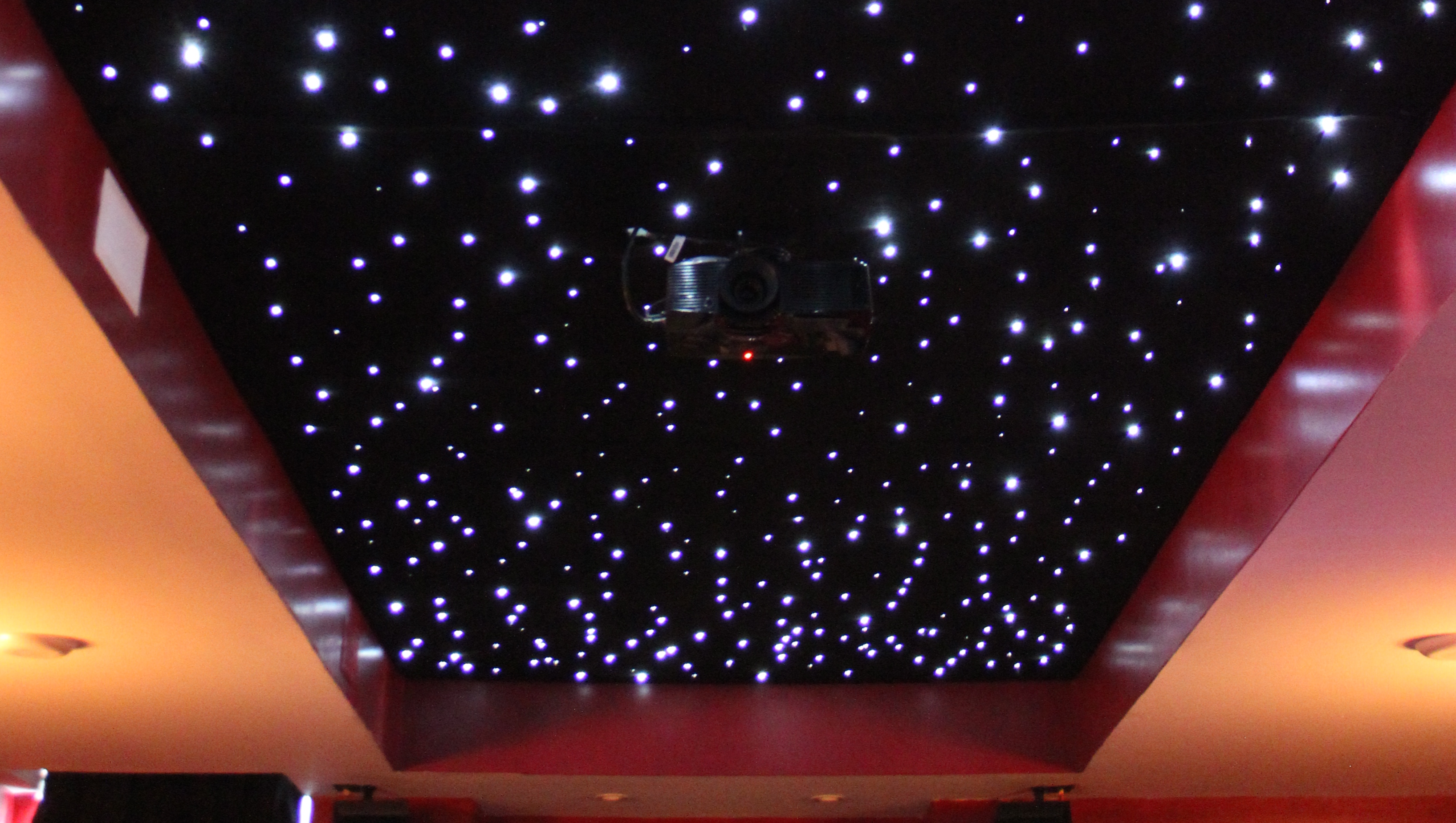
Sit back & relax – its time to enjoy a movie under the stars!







